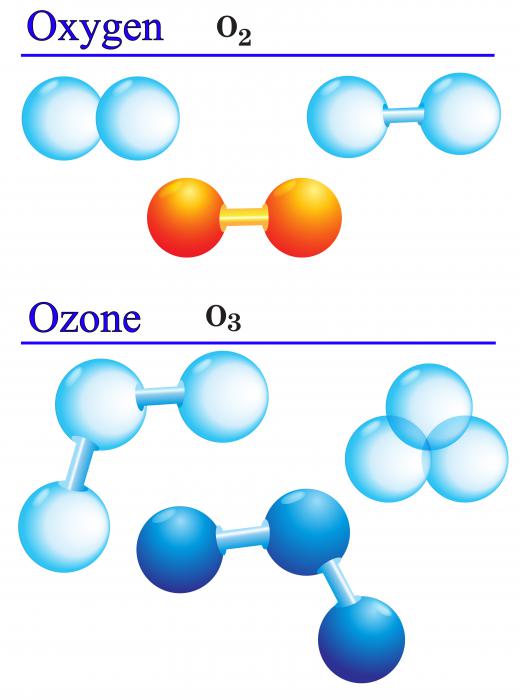Dichlorodifluoromethane is an inert gas once widely used in refrigeration applications and the manufacture of certain medications. This gas is an example of a chlorofluorocarbon (CFC) and is more commonly known under the name freon-12. Due to concerns about the impact of this gas on the ozone layer, it has been banned in a number of nations and phased out of use in others out of deference to environmental concerns.
This gas is naturally colorless and inert, with a faint odor. One of the widest historic uses of dichlorodifluoromethane was in cooling systems like air conditioning and refrigeration. The gas worked very well as a refrigerant, with a high degree of efficiency in well maintained systems. As long as the gas was contained, it did not pose a threat, but freon leaks could occur during maintenance and repair, or with older systems that were not working correctly, and the escaped gas could contribute to depletion of the ozone layer.

Additionally, manufacturers used dichlorodifluoromethane as a propellant in aerosol products like inhalers for asthma. While the gas is not particularly good for human health, in small doses seen with propellants it did not pose a considerable risk. However, with each actuation of an inhaler or other aerosol device, dichlorodifluoromethane was released into the environment. The cumulative release of the gas was negligible compared with that associated with cooling systems, but still potentially significant.

In 1994, the Montreal Protocol created a framework for signatory nations to utilize in bans and restrictions on the use of chemicals known to cause problems with the ozone layer. Dichlorodifluoromethane was one of the chemicals banned under this treaty. Cooling systems built before 1994 may contain freon, and the retrofitting of such systems is advised when they need maintenance and repair. During retrofits, the freon-12 can be safely removed and replaced with a different gas. Another option is to replace such cooling systems entirely.

Because systems that use dichlorodifluoromethane are still in circulation, some shops maintain equipment to safely remove and contain freon. It is necessary to remove the gas for some types of repair work, and also to drain systems that contain freon before disposal, to limit chances that the gas will escape into the natural environment. Auto mechanics and cooling system repair centers are the most likely to have such equipment and can provide a quote on the cost for draining a system and for the safe disposing of the dichlorodifluoromethane it contains.
Ever since she began contributing to the site several years ago, Mary has embraced the exciting challenge of being a About Mechanics researcher and writer. Mary has a liberal arts degree from Goddard College and spends her free time reading, cooking, and exploring the great outdoors.

